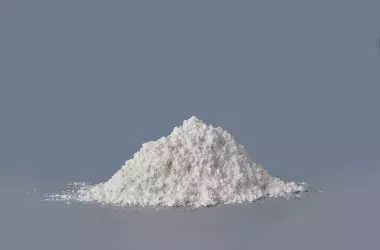Hydrated lime

What is Hydrated Lime?
Hydrated lime, Ca(OH)2, also known as calcium hydroxide, is a strong alkali produced by adding water to quicklime (calcium oxide). This process, called slaking, converts the oxides into hydroxides and generates heat.
Depending on the amount of water used, calcium hydroxide can either be a dry hydrate (dry powder), a paste (putty lime) or a liquid milk of lime also called lime slurry (dry suspension in water).
Properties of hydrated lime:
- Appearance: White
- Chemical Formula: Ca(OH)2
- Melting Point: Decomposes at 580°C (1,076°F) before melting
- Boiling Point: Not applicable (decomposes before boiling)
- Density: 2.2 g/cm³
- Solubility: Slightly soluble in water, forming a strongly alkaline solution: 1.75 g Ca(OH)2 /L
- pH: pH of around 12.5 at 25°C (77°F) (highly alkaline)
Applications of hydrated lime:
Hydrated lime is commonly used in various applications, including:
- Construction: Frequently combined with sand and cement to produce mortars and plasters.
- Agriculture: Serves as a soil conditioner to neutralize acidic soils.
- Water Treatment: Utilized to adjust pH levels and eliminate impurities from water.
- Industrial Processes: Plays a role in the production of various chemicals and the treatment of wastewater, or when calcium is needed.
Lhoist’s brands for hydrated lime are: Akdolit®, Hypel®, Sorbacal®, and more.
Frequently Asked Questions (FAQs)
What is the difference between quicklime and hydrated lime?
Quicklime (calcium oxide) is the raw material that reacts with water during the slaking process to form hydrated lime (calcium hydroxide), with heat release. While quicklime is highly reactive regarding water and requires careful handling, hydrated lime with water has much lower heat release and is easier to store and use in various applications.
Why does the slaking process generate heat?
The reaction between quicklime (CaO) and water is exothermic, releasing heat as the calcium oxide is converted into calcium hydroxide. This is a key characteristic of the slaking process.
How does hydrated lime function in industrial chemical processes?
In industrial settings, hydrated lime acts as a reagent for pH control, neutralization of acidic environments, and as a source of calcium in chemical reactions. It is also used in the production of various chemicals like calcium salts.
Why is hydrated lime slightly soluble in water, and what happens when it dissolves?
Hydrated lime is slightly soluble in water due to the limited solubility of calcium hydroxide. When it dissolves, it forms a strongly alkaline solution, which makes it effective for pH adjustment and neutralization applications.
What makes hydrated lime suitable for soil stabilization?
Hydrated lime stabilizes soil by reacting with clay minerals to reduce plasticity, improve strength by pouzzolanic reactions with the clay, and increase resistance to moisture. This is particularly beneficial in building materials for construction projects involving roadways and foundations.